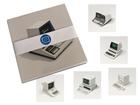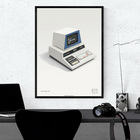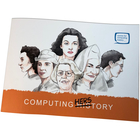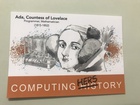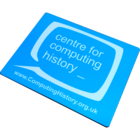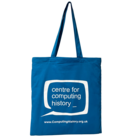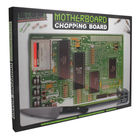
| Home > LEO Computers > LEOPEDIA > Oral & Narrative Histories > Tony Morgan: Interview |
Tony Morgan: Interview
| Home > LEO Computers > LEOPEDIA > Oral & Narrative Histories > Tony Morgan: Interview |
Copyright
Leo Computers Society
Interviewee: Tony Morgan DOB: June 1937, DOD 4 April 2020
Interviewer: Ray Hennessy
Date of Interview: 08.11.2011
Role in Lyons: Commissioning Engineer
Joined Lyons: December 1957
Abstract: Joined LEO as engineer. Spent most of his career as commissioning engineer on LEO IIs and IIIs, finishing as senior commissioning engineer. In retirement LEO Computer Society’s expert on all matters relating to LEO hardware. Active Member of LEO Computers Society. Copyright: LEO Computers Society.
Restrictions: None known
(Recording to be added.)
Tony joined LEO in December 1957 and became Chief Commissioning Engineer for the LEO III range. He was responsible for the commissioning of the last LEO built for the Post Office and for its decommissioning of the same computer in 1981. He became an active member of the LEO Computers Society until ill health forced him to retire to a care home, though still acting as expert on engineering memorabilia for the Society. He was a stalwart of the LEO community. Date : 8th November 2011Transcript : The LEO Oral History Interviews: Tony Morgan Interview date: 8th November, 2011. This transcript of the voice recording has been edited with the agreement of the interviewee, Tony Morgan; mistakes have been corrected and minor clarifications added within the text; more substantial additions (e.g. names, etc) are in italics in square brackets. Terms which may be unfamiliar to readers are explained in end notes. Any opinions expressed by the interviewee are his alone and do not represent the views of the LEO Computers Society Ray Hennessy Tony, this is going to be a recording for the LEO Computers Society Oral History Project. It’s the 8th of November 2011 and I’m Ray Hennessy. I’m interviewing Tony Morgan to give us his story of his involvement with LEO Computers from the earliest days. Good morning, Tony. Perhaps you’d like to introduce yourself, Tony Morgan Well, I’ll just give you my background. I was actually born in Kenton, near Harrow in Middlesex in June 1937. I went to Glebe Primary School, I gained a scholarship to Harrow County Grammar School for Boys which this year celebrated its Centenary. The Guest of Honour at our Centenary Dinner happened to be Michael Portillo, an old boy. Arithmetic/Mathematics was my main strength backed up by Physics and then Chemistry. I got six O levels, won the Physics Prize in 1953 and then got 4 A levels, Pure Maths with a distinction. They put the distinction level up for Applied Maths that year so I missed a distinction by a couple of percent. I’d heard about LEO and Lyons and computers twice before I left school on the radio: the initial funding and development at Cambridge of EDSAC by Lyons, and then the first successful job being run. My ambition was to fly with the RAF so I didn’t stay on to Scholarship level. I went to RAF Hornchurch for aircrew selection and was told to try again in a year or two. I took a job with the Audit Department of British Rail, London Midland Region at The Grove, Watford, the “temporary” wartime HQ. Wooden huts and coke stoves were good experience for the RAF. This is now a luxury hotel and golf course. I decided to reapply for aircrew when called up for National Service in 1955. Three of us did not have to do the practical aptitude day as we had been before. At least we had the satisfaction of knowing we had passed that. I trained as an air-radar fitter and was eventually posted to RAF Odiham, having broken my leg playing rugby while training at RAF Yatesbury. I was wondering what to do on demob. I found an advert for trainee computer engineers in “Flight” magazine with LEO Computers. RH Well, that’s fine. What sort of up bringing did you have? Were you at all academic, would you say or not? TM I can say I was very near the top of the class at Primary School and also I got very good placings right through my grammar school career. RH Mainly Science? TM As I say, Maths backed up by Physics and Chemistry. RH Right, so LEO Computers were barely known to people at that stage. But you chanced that when you saw the ad? TM Actually it was pure luck and I didn’t connect it with what I’d heard on the radio, several years before, that I was joining a subsidiary of Lyons, until I went to the aptitude test because it was in a Lyons’ building. RH Now tell us about the induction into LEO. TM Well, as you probably remember yourself, there was this one-day aptitude test and you were given some clues as to basic programming and were set more exercises than you could do in the rest of the morning. In the afternoon they introduced sequence changing and you were given more exercises. The main idea was to code them as efficiently as possible. And this was because the storage space for programs was so limited on the early machines. RH Did you go to any other companies for interview? TM No. I had put an application into the GEC Research Labs at Stanmore, but I must admit that I was a naughty boy. I got the job with LEO and I didn’t turn up for the interview. Black mark from GEC! RH Lucky for LEO I think! Now tell us first of all about your interview. This was Doug Comish, was it? TM No. Doug was purely the reception officer for the aptitude test. I then had to come back from the Air Force on another day and went to Minerva Roadi and was interviewed by Bob Gibson who was then in charge of Engineering/Engineering Training. RH And was he an engineer? TM I think he probably was but you didn’t get that from him. I think to some extent he was doing it by rote. RH He was more of a manager? He went on to head up the Training Division. TM That’s right. RH We’ll be talking to Bob at some stage to try and get his reminiscences. Now, what about the actual job offer? Was it a surprise? TM You can’t say it was a surprise. All I remember it was nine pounds fifteen shillings a week which was almost twice what my friends were getting as apprentices elsewhere. RH It was actually quite a good job for the day. OK, let’s go through the initial training and how you started. TM I actually started between Christmas and New Year, 1957. The basic training course was already halfway through, four weeks old, but I’d already done that in the Air Force so I was able to slot right in. That was followed by a, I think it was twelve-week, course, on LEO II, on how the thing worked and towards the end I was suddenly called in and I was sucked off to do shift work on LEO II/1. I never took the end-of-course test, and it’s rather ironic because in later years I sat in on panels for end-of-course tests for engineers! RH Who do you remember from those days? TM Well, in terms of personnel, Frank Walker had become Engineer-in-Charge to release George Manley to come to the factory to do LEO II/5 for Hartree House, so with Frank in charge I became an Assistant Shift Engineer. There was an oldish guy called Stan Evans (who subsequently went to Honeywell) was initially one of the Shift Leaders, and the other Shift Leader was a guy Mike Saunders. Unfortunately he got demoted to an Assistant Shift Engineer and I became his Shift Leader, which was a little bit difficult. So I was there fifty weeks and during that time I had my first encounter with David Caminer. RH What was that about? He was very much on the design and customer side. How did that come about? TM This was on the occasion of the Computer Exhibition which used to happen at Olympia, and of course we were the only company that could actually show working computers. Demonstrations used to be organised to bring parties to both LEO I and II/1. The arrangement was that, when the party was downstairs, they’d phone up to say ‘Is the machine working?’ and [on this occasion] the whole thing had just crashed! So David stomps up to the second floor and I’m trying to replace a fuse. I knew nothing about power distribution. It wasn’t in the training course. And he’s saying to me ‘Have you tried the Transit Unit? Have you tried the Transit Unit?’ I told him in no uncertain words ‘I don’t know what a f***ing 200 volt fuse blowing at this end of rack 4 is anything to do with the Transit Unit at the far end of rack 2’. Fortunately the next fuse cured it. We went ahead with the demonstration and a few weeks later an operator slipped on the parquet floor and banged on this very panel. We took it down and a screw had come out and the -200 volts could be made to touch the metal frame which was earth. So that was quite interesting, but at least we accidentally found what the real cause of that crash was. RH So there was actually live work going on at this time? For Lyons or the customers? TM Yes. The pattern of work we were doing was part of the Ford payroll, we were doing the Kodak payroll, we were doing the London Borough of Greenwich payroll, plus the Lyons jobs which I don’t know much about. There is an interesting story on the Kodak payroll. One day they were stuffing envelopes out here at Harrow and the girl went up to a supervisor and said ‘Please, Miss., I can’t get two hundred pounds in this envelope’, bearing in mind it was a weekly payroll, ‘I got a hundred pounds odd in the previous envelope’. And what had happened was one of the print bars was sticking and being dragged up by the next bar and occasionally there was a ‘1’ or a ‘2’ appearing in the hundreds of pounds column. So that was the work that was going on and then the Ford payroll went on too, so we’re doing the whole run, and it involved two nights a week, Monday and Tuesday nights. The big advantage of that was the dinner in the Directors’ Dining Room at about one o’clock in the morning with Wally the night chef. So those are the main memories of the LEO II era. There was another fault situation which developed in the night where the machine, I found, was doing every other instruction. It was only taking instructions from one half of the word and I got the oscilloscope out to go and have a look, and I got up the aisle and I went to open the door and the door was red-hot. All the doors were red-hot. The fans were all apparently working, so I then lent out of the second floor window to look at the intakes and outlets and I found that a sunblind had collapsed over the intake. So I got a broom, I lent out and I propped the blind away and the machine cooled down. I found the fault, which I believe was a diode, and we were back on the air. RH That is fault finding! TM The other memory I’ve got is that the programmers used to have a two-hour possession on the machine every afternoon. The operators would go off for a fag. One afternoon I’m in the Engineers’ Room and Helen Clarke, who married Mike Jackson, came in and said she’d lost the Start Button. ‘Really?!!!’. I went out, and there was a hole in the console, the Start Button, actually there were two buttons, because that booted the machine. There was a Restart Button. The bezel had come off and the button was hanging down on its wire inside the Control Desk. ‘I’ve lost the Start Button!’ she says. RH Not a common fault, I should think. TM So that’s the Elms Houseii era. RH And that finished when? Fifty-nine? TM That was in Fifty-nine. I’d said I wanted to build a machine. I was fifty weeks up there and I came back to the factory. RH That would have been some time early in Fifty-nine. TM Yes, in that period they’d delivered the first machine, LEO II/3, to Stewarts and Lloyds and probably were about to deliver the much more complicated LEO II/2 to Imperial Tobacco, because that had high speed drumsiii and Samastroniciv printers. A totally different configuration. RH So, you didn’t work on those? TM No. Steve Farrow had started LEO II/4 for Fords and I went and helped on II/5, with the magnetic tape system. This was the first time we had put magnetic tape seriously on a LEO machine. I and two of the other engineers used to go down to Decca’sv to accept the tape decks. They’d take us out for a very fine lunch at The Ship at Shepperton. It was one of the few places in the Country with a Michelin Rose and then we’d say ‘Yes, the deck’s all right’. RH That was a one-inch system, do you remember? TM They were. I think, one-inch tapes. Yes, yes. RH After that we had half-inch tapes? TM Yes. The only thing I really remember about that was I actually found and cured a fault. They were fixed lengths blocks and they used to leave gaps, and when it came to the end, it would come back and write blocks in the gaps. There was a problem when it turned round and I actually came up with a modification so the tape deck ‘Went round the bend’, as we said. RH It had to be very precise. Leave just enough room for the insertion blocks. TM That was my involvement with LEO II/5vi. And then I went off with Steve Farrow into a garden shed in the car park at the back of Minerva Road where the initial core store research rig was. I learnt about that and then I commissioned LEO II/8 for Standard Motors which was the first machine with a core store. RH Was that a big machine. TM It gave you four times the capacity of the mercury storevii and though it wasn’t all immediate access, the way it worked was that there were extra instructions to transfer blocks in from the other three-quarters of the core store and copy blocks out of the main quarter of the core store – the one quarter that had replaced the mercury store. RH So basically there was the same size store for operating and instructions. You could move data much quicker than from the drum. TM And the core store was quicker anyway than the mercury store. RH Let’s go on and talk about LEO II. You worked on LEO II for many years and it was actually quite an advanced machine, well a very advanced machine for its day. What do you remember about the machine in particular? TM The one thing with LEO II, over and above LEO I, is that they took the pulse size down from the standard one microsecond [for the mercury store] to a quarter of a microsecond. They hadn’t invented nanoseconds then. This is two hundred and fifty nanoseconds, and they interleaved four words so that the tubes were a quarter of the length. And that meant that that sped the access time up by whatever factor that is. So LEO II was quicker just purely because of this shortening of the tubes. The trouble is that the oscilloscopes that we had at the time weren’t really up to looking at nanosecond pulses. But that was all working very well, of course, when I was on LEO II/1. The only problem I can remember there is that occasionally we’d get one tube apparently corrupted and we took ages to find it. It was actually when one of the operators was using the printer as a tabulator, putting cards in and printing, and when they flicked in and out of tabulate the tube corrupted. Eventually we worked out that a power wire to the printer was going nearest out to some cables near the tube and that it was interference from the tabulate switch that was corrupting the tube. So that was an interesting thing. I wasn’t personally involved with that one but we were glad when it was fixed. RH Yes, I can imagine. What else do you know about the LEO II innovations? TM Well, of course the high-speed drums on the Imperial Tobacco machine [LEO II/2], LEO II/5 and the British Oxygen machine [LEO II/7], as you will know. We then took the Ferranti drum down to its standard speed so it became a much more viable device. It was only half-speed. We also had the Power Samastronic alphanumeric printers, which had a lot of mechanical problems, and every one went back to the Powers factory for a rebuild with more modifications to increase the mechanical reliability. Of course, it was alphanumeric and it was three times faster than the first numeric printers. RH Which were Hollerith? TM Yes. Two of the machines had the alphanumeric Bull printer which was a lovely device. I believe LEO I had one at one stage but I don’t know much about LEO I. Those, I think, were the only peripheral variations. The main thing was the addition of a core store and the addition of tape decks. Those were the two major features on LEO II. One interesting thing that came up in the commissioning of LEO II/8 was when the test programmers came along with a new version of the square root test and it failed. They’d thrown some different data at it. I analysed it down through the binary arithmetic and under a certain set of circumstances it failed. I designed a gate, an ‘And’ element, put it in, wrote to the designer and within minutes of him receiving this memo (this was Colin Lewry) he came round. His square root had gone wrong after eight machines. I went through the binary arithmetic with him and he agreed that it looked like there was a problem. He went away and two hours later he said ‘Yes, you’re right. I’ve put your mod [modification] through’. That was what commissioning was all about. We were actually working, finding development problems as well. RH This was all very innovative at the time, because there were scientific machines around at the time, but this was the first time it square root was being used in business. TM I think it’s the only time that square root’s been used on a business machine! RH Was there anything else you wanted to say about this time at Minerva Road? TM Well, one of the stories is that at Christmas, the engineers, as they will, would go down the pub. But we had to get back because “TRT”, Raymond Thompson, the Managing Director, would come round the factory to wish everybody a Happy Christmas. He used to say ‘Have you got a machine that’ll play a carol?’ We’d rev a machine up, and play him his carol and then he’d tell us we could all go home early. This music on the machine, using the loudspeaker, had a later reprise in the LEO II era because the Duke of Edinburgh came to visit the factory and Hartree House. Two of the commissioning engineers, (Alan Potter and Dave Frost), programmed “The Sailors’ Hornpipe“ which then, at Hartree House, was inserted into the Glynn Mills payroll, Glynn Mills being the people who did the officers’ payroll for the Services. At a set point in time during the visit a signal was given and the ‘Preset Sequence Change’ key on the Control Desk was put down and the payroll stopped and the machine played “The Sailors’ Hornpipe“ for the Duke. I was lucky enough that, at the factory, LEO II/8 was the most advanced machine so I met the Duke and he asked me about the commissioning of it and I’ve got a photo to prove it. RH So that was your time at Minerva Road. Did you go to any other sites at that time? TM LEO II/8 was the only LEO II machine that I did. It was a very smooth installation, The only problem was that one of our delivery lorry drivers nicked some sorbo rubber from Standard Motors car seat cushions. It gave us a bit of a bad name. They weren’t even employed by LEO – they were contractors. RH What did you do after your period on LEO II? TM I then joined Steve Farrow again and we worked on the pilot LEO III, which was a half-word machine, paper tape in, paper tape out. We had a lot of problems with the actual microprogam assembly. LEO III was the first microprogrammableviii machine. It was purely the way it had been made and it was just going to be impossible to manufacture to a reliable standard. Fortunately the LEO III designer [Hussein Prashad Abdul S “Paddy“ Salam] was brilliant. He came up with what we call the classic attaché-case solution where it was split into twelve little black boxes all cabled together. That solved the production problem and made it a lot easier to maintain. RH So the microprogram store was built out of separate units? TM You had planes which had instruction stages and action signals and the cores were only where they needed to be for each stage of it. RH Can you describe anything about the microprogram store because it was such an innovation? What about the geometry of it? Three-dimensional core? TM I’m not sure what you mean by a three-dimensional core. RH The digital input and output would have been two of the dimensions and the controls would have been the third dimension which had to be knitted between the cores as I remember. TM The core didn’t store any information. It was the presence of the core where the x and y wires crossed which then led to a signal on the read wire whereas with a rewritable core store you had to have what was an inhibit wire which would knock a one back to a zero. RH And that would be used for the normal program store whereas the microprogram store was quite different. It was new technology? TM Yes. It was a brilliant idea, whoever came up with it and we’ll come to microprogramming a bit later on, I hope. RH OK, we’ll put that on the list for “In a Moment“. And then? TM We expanded it to the full-word machine. Meanwhile George Manley and Frank Walker were getting the magnetic tape system going. Vic Kleiner had come from Elms House and was getting the first of the Anelex printers going. And then things changed. George had started LEO III/2 for Rand Mines, South Africa and he was due to stay there for three years but then Peter Mann left for Honeywell and George was promoted to Manager and I took over LEO III/2 and that became my next major machine. I installed it in South Africa before LEO III/1 ever left the factory. I must admit I’ve had a memory since of David Caminer saying to me in later years ‘What you did taking III/2 to South Africa, six thousand miles from base, the first LEO III in the world, was incredible’. We did have some problems out there, problems with the Master Routineix, trying to upgrade that at six thousand miles distance. Communication problems where letters that should have been sent by airmail went by sea. A third problem was that we fitted some power amplifiers at the end before we left for South Africa One of the components in them was creepy and it took me a long time to pin it down. And it looked like we were in a disaster area until I found this one creepyx component. You just couldn’t predict when it would go wrong. RH How long were you out there? TM I was out there ten weeks. RH That’s not bad to install the first machine in the world. You mentioned the Master Routine. Are we going to come onto that? Do you know anything about the Master Routine? TM No, not really. I do have memories of the Master Routine at Minerva Road where we’d have a problem with the Master Routine and we’d call the Master Routine programmers: Adrian Rymell, who still lives nearby in Rayners Lane, here, and a rather lovely lady called Sheila Milne who married somebody at Kidsgrove eventually. She had terrific legs! She used come and sit on the control desk and say ‘What’s the problem?’. I nicknamed her “The Mistress Routine“. RH So the Master Routine was effectively the whole control for the machine? What would you call the equivalent today? TM It was the operating system. On LEO III was a multi-programming system which was, again, the first in the world. RH Now we already had the microprogramming system, and presumably that carried on for the whole of the LEO III range? TM Yes, indeed. RH We had the Master Routine which was the first fully-fledged operating system with multi-programming. TM Incidentally, I’ve put in there [i.e. his notes] when we come onto the Post Office and the LEOs later, when the Post Office were the only people still operating LEOs, they actually took over the maintenance of the Master Routine. I had a very good relationship with their programmer. He was very good. He knew it inside out. He saved a lot of problems, [whether it was a hardware or an application problem]. So that was the early LEO III era. RH So you came back in Sixty-two and then what? TM I then went on to commission and install the showcase LEO III/5, at CAV in Acton Vale. You could actually stand on the pavement and watch it work. I also commissioned and installed the largest LEO to date which was LEO III/9 for Customs and Excise, Southend. It had more tape decks, more channels than we’d ever done before. That went reasonably smoothly. At the time I had a girlfriend who operated IBM 1401s in their showroom in Wigmore Street. She showed me them one evening. Shortly after I took her to Minerva Road and revved up III/9 which was coming up to factory acceptance trials for the full multiprogramming suite. When it was all running I gave her the Crocodile Dundee thing, “That’s a computer!”. LEO IIISxi was a great machine. Once we sorted the early problems out, they began to flow and there was no problem. So at the end of LEO III/9 – by then we ‘d merged with English Electric – I went on with another engineer to Kidsgrovexii to help them sort out the problems they’d got with KDF9, which was a very complicated scientific machine. They’d already sent them out into the field and they still weren’t working. They hadn’t got a professional commissioning team. They were using design engineers, field engineers and what they called system testers. There was no one person who took the whole machine from beginning, to working, and out. I was supposed to spend six months there. Frank Wroe spent a year there but after four months we took the first Post Office order and I was sucked back to Minerva Road to do the first machine for the Post Office. RH So that was the one which we called LEO III/90 for some reason? TM Yes. The 90s have caused confusion over the years. They were insertions in the production run, so we went from III/18 to III/90, to get an extra machine for the Post Office, and III/19 which was the second machine for the Post Office at Lytham St. Annes, interim machines. That went pretty smoothly being a LEO III. [It was the first machine with High Density tape decks. The packing density on the tape doubling from forty-five characters a second to ninety.] But we had to go through the Post Office acceptance test. We’d already done similar testing on things like Customs and Excise. They [the Post Office] had their own team. They were all Post Office engineers anyway in ‘Post Office TD9’ and in the Central Government Treasury Support Unit. I did that and went on holiday and when I came back, the world changed. RH You were allowed holidays occasionally then? TM I insisted on going that year, I’ll tell you. RH How did ‘the world change’? What happened then? TM When I got back, George Manley announced he was going to Honeywell and he’d recommended me to take over from him and I remember saying ‘Why me? Why not Alan, or Dave, or Dave?’. Alan being Alan Potter, he was a First-class Honours graduate in Maths from Cambridge University; or Dave White who was an experienced engineer we’d brought in; or Dave Springle who was going to be one of the young thrusters for the future. [All three have passed away prematurely.] Anyway I was probably a better organiser than them and so I took the Department over. And then we began to get troubles on the machines. The first IIIF10 was on the factory floor for Dunlop and we were beginning to get problems with it. Then we got more orders. We doubled the number of commissioning sites at Minerva Road. We probably quadrupled the value of the output. The IIIF had monumental problems with noise, earthing, also with the microprogram. The so-called “potless” [lacking a potentiometer], in other words non-adjustable, read amplifier [a hundred and twenty boards] landed up being modified three times until dear Tony Headley agreed to put a potentiometer on it so we could set it up. The problems got worse because what was happening, transistor manufacturing was getting better. They were getting faster. There was no top limit on the speed of the transistors in the specification, which generated more noise, more ringing of circuits and led to a major investigation after we failed a Post Office test which we thought was down to these problems because we couldn’t nail it, because they were developing on the later machines. We got a huge Research and Development exercise going after I got Tony Barnes, my Production Director, to convene a meeting with Development. Four of us sat down. Tony Headley, the Development Manager, who really nobody liked, and Tony Williams [the Assistant Development Manager], who I did like. I played rugby with him. We sat at this meeting “Tony. Tony, Tony, Tony“ Anyway, they started investigating. Alan and I had moved the failing GPO machine into the air-conditioned room, in which the original IIIF prototype had been commissioned. We froze it, we cooked it, we sped it up, we slowed it down, we put margins on it, we beat it, and then we found the fault. We always had a soldering iron plugged in the back of the machine for quick fixes during trials. You don’t want to wait for a soldering iron to heat up. This one happened to be one we’d inherited from Production when they stopped at Minerva Road. They gave us a bunch of soldering irons. They were thermostatically controlled and each time it switched on and off, it could cause interference. One day after this huge exercise was going on, Tony Barnes came down and said “How’s it going?“ And I said “ Well I think you’d better sit down“ We sat down. I pointed across to the machine. I said “We’ve actually found the fault on the Post Office machine and told him it was this soldering iron. I said “It’s got a bloody good investigation going on IIIF”, and he laughed like a drain. Fortunately things began to settle down but that was a very difficult era. The design problems were never really got out of IIIF. RH What was the ‘F’ designation about? TM It was originally LEO III. When the faster design came along they called it IIIF but you could have two values of Plessey store on it. A 6.0 microsecond and a 2.6 microsecond, so they became LEO 360 and LEO 326 but the actual processor was exactly the same for the faster machine so we called them IIIFs and the slower ones got called IIISs. RH So basically it was a faster machine and faster stores? TM And faster transistors. It used what was called ‘nand’ logic and it had been designed with truth tables. Quiet honestly the functional drawings, whereas on LEO II and LEO IIIS were readily understandable, you’d see this bit of IIIF logic and ... …!! Alan Potter was brilliant at it. With his First Class Honours degree in Mathematics, he could read logic upside down. I never commissioned one so I never got myself round it. They were bigger machines, more input/output channels. That’s what the Post Office went for. RH So you’d been the Commissioning Manager for what, three years? What was that like? Was it a fun job? Or stressful? TM I was later told by my Chief Operator, John Daines, who you will know through the LEO Society, that during that period he thought I was going for a nervous breakdown twice. I wasn’t only working long hours, I was playing rugby, I was going up Town jazzing. I was living life to the full. So it was very hectic. Some of the engineers would work all the hours God sent. For some of them, because they weren’t paid overtime, particularly two of the senior ones, it was largely a nine-to-five job for them. One way or another we got the machines out, got them accepted, and I think, in the end, the salesmen were happy. RH Was that the whole of LEO III range right up to the end? TM I did it right up to what was then the last numbered machine, which was LEO III/58. I managed the Department. I also put the final enhancements into the field myself. I actually did an extra Autolector for Lyons which was a beast of a machine. RH What was Autolector? TM Autolector was actually a document-reading machine, on line. For Lyons we had designed a thing called a Lector which was an off-line form-reading machine where you put bars, bar-marks, [in designated boxes] and Lector punched a corresponding paper tape [for input to a computer]. Autolector was a huge machine. It had been developed from a Treble Chance pools-checking machine. It had this huge drum and it had all sorts of levers. It was like the rugby song.“ Round and round went the f***ing great wheel“. All belts and everything. It was a horrendous device but it worked. RH That was an inputting device? TM It was inputting these hand marked forms where you bar-coded a number in a semi-binary fashion and it translated straight into the machine. There’s a lot about Autolectors in Peter Bird’s book which we’ll mention later. RH What about any other innovative devices? TM There was the odd innovation, like we put a Burroughs card reader on a machine for Australia. RH The Xeronic printerxiii? TM We didn’t have anything directly to do with Xeronic printers. Xeronic sold them direct to customers. Lyons had one where there was the notorious fire which is covered in the Alan King interview. The Post Office installed one over at Charles Housexiv, but never actually used it in anger, probably as a result of the fire at Lyons, although when Lyons had the fire, they were able to go over and use the one at Charles House. There were the LEOs over there when III/7 was out of action so after the fire they –the Lyons operators – had to go across the road to carry on working. RH Charles House being across the road from Cadby Hall? TM Just on the other side of the railway bridge at the west end of Kensington High Street. RH Your people weren’t involved in the commissioning of them – the Xeronic printers? TM No, we had nothing to do with them at all ... fortunately! The Autolector was bad enough. RH Is there anything else about the LEO III era you can think of? TM Well, all I can say is that, at the peak, I had twenty engineers. More than half of them were capable of doing a machine from switch-on to acceptance on site. I had twelve operators to run the acceptance tests, and a department of support staff, an electrician, wiremen, modifications clerk, etc. I had over forty people working for me. John Heeney told me, when I went to his retirement do, he took me on one side and he said “That team of LEO people you had at Minerva Road was the best I’ve ever come across in my career“. He’d been doing serious projects on unreliable systems: System 4, 1900 and 2900 where there were big problems on those ranges in the field, on upgrades. So he met engineers and operators from all the regimes. That was quite satisfying. RH He had experience of the later ICL machines that took over from LEO and ICTxv? TM That’s right. Yes. He actually came from being a LEO engineer initially employed by Fords until we took over the maintenance of the first three LEO IIs - II/2, II/3 and II/4. The customers employed their own engineers, we trained them. But they had no career path, of course, so it was decided it was better that the manufacturing company should do the field maintenance. And John became a senior manager. RH There’s another story that you’ve told us about the floods. TM Yes. The 42 Minerva Road site was actually an old Lyons tea warehouse and it had gabled roofs with long gutters. We had two cloudbursts and the water overflowed the gutters and flooded two or three machines under the run of the gutters. We had to get industrial blowers in, go down and buy all the hair dryers up from the local shops. We normally got back on the air within a day having literally dried out the parts of the machines that had got flooded. The water would come through and the machines would power down. But years later, I got involved with LEO again in my career and I found a totally corroded relay in a tape deck at Charles House. They were mounted upside down and the water had got in the cover. It was a relay that was supposed to operate only when there was a power surge situation. It had probably never been called into play or it didn’t work anyway. It had corroded away. The water had just sat there and it had electrolysed over ten years. Minerva Road was exciting! We also had no air-conditioned sites until we inherited LEO III/12’s commissioning site and customers used to say ‘Why have we got to have air-conditioning? You don’t air-condition the factory’ I used to say ‘We test them under the worst possible conditions’. In the end it was decided, because we were then beginning to get trouble with humidity on magnetic tape, paper tape and cards. That was the main problem. We used to hang dustsheets all round a site and boil tea urns to get the humidity up. A very Lyons solution, I called it. In the end we managed to air-condition the other seven sites at Minerva Road and managed to work around the production schedule to get it done. So Minerva Road became a nicer environment in every way. RH How was your life at the time? It sounds as though it was pretty hectic. TM I will mention one event. I was playing rugby for Lyons and I broke my leg. Whereas in the Air Force I’d broken a leg [the other one but the same injury in both cases] and I was away for three months, sick leave and rehabilitation, at LEO I was back in the factory after three days. There’s a photo in Peter Bird’s book, number 64, with me on crutches at the back of the Czech team going out to Czechoslovakia. I just happened to be in the background talking to two of my engineers [Derek Bentsed and Frank Wroe] and you can see I’m on crutches. We worked all through that. Initially people, either John Daines or Dave White, were picking me up to get to work. But then I learnt to drive in plaster, which was totally illegal. So we carried on. Playing for Lyons, something I do want to mention, is that LEO Computers won the Lyons Sevens Cup on three occasions and I captained the side on the final occasion. In fact, Ray, one of the players who turned up, because we could use players in the side if they worked for LEO and played for another club, was John Smythson who played for Old Purleans. He was a very gentle person to work with, but you put him on a rugby field, he was phenomenal! RH I’m not sure if we’ll be interviewing John. He’s not at all well. So this was the end of your LEO III involvement. Where do we go on to now? TM We were preparing to commission System 4/50’s at Minerva Road. I was training engineers, I was purchasing test equipment, assembling spares. The company was going to buy in twenty RCA Spectra 70/45s on which the System 4/50 logic design was based. Alan Potter had already gone over to America and accepted the main system, but without the tape decks. When it came up that the tape decks were ready all my senior engineers were tied up. It was only supposed to be a week, so I go out to West Palm Beach and they’re not ready for me. They’ve got problems. I was being called in the middle of the night and they were still going wrong. In the end I got my coat off and I sorted out their problems for them. By then it’s Easter and I’m running out of dollars and I go and use my open ticket. ‘Oh no, there’s no flights up to New York. We do have First Class, sir.’ ‘How much extra?’ ‘Nineteen dollars.’ ‘I’ll take that.’ I spent a night in New York and flew home. Suddenly, the company [now English Electric-LEO Marconi] decided to cancel half the order. With the closure of Minerva Road, they’d decided to move Commissioning up to Winsfordxvi and I didn’t want to go, I’d already been to Kidsgrove for four months. There was already an English Electric guy out there. I was supposed to go to out to Philadelphia, getting these twenty Spectras over to the UK. So suddenly I haven’t got a job. RH The Spectra 70/45 was also the ICT 1904, I think. TM It was more that the ICT 1500 was an RCA 301, because they had all the commissioning boards up over the aisles in the plant in Florida. There were a lot for ICT and the customer name. We used to hang a board up, who the machine was for. The same thing there. That was the original association. RH This was just before the 1968 merger. see 15 TM I think the English Electric KDF8 was based on the RCA 501. But now I’m digging very deep in the memory. RH There was a lot of, what shall I say, cross-contamination or cross-fertilisation of ideas. Certainly we were very much on a parallel path with ICT at that stage. Did you get involved in the merger discussions at all? TM Not in the merger discussions. I think we ought to talk now about what I did from then on. RH Now this was just after the merger in 68. TM No, the merger happened shortly after. I hadn’t got a job. Fortunately Mike Gifford who became a Regional Sales Manager, had talked to me one day, when he was showing a customer around the factory, and he said ‘Your commissioning engineers, some of you should do product planning’. The way we looked at Systems and understood them. And so I said to Personnel ‘What about me becoming a product planner?’ I did System Consultant training and that was the time of the merger and I moved to High Holborn and I was actually supporting small 1900s as part of it. Fortunately Mike Gifford had remembered me and when the System 4 product planner down at ICL Head Office wanted to move on, I took the role over and I planned the final System 4s: the System 4/62s which were a cut-down 4/70 for export behind the Iron Curtainxvii and I was also responsible for getting the System 4/52, which was actually the RCA Spectra 70/45 Mk II, planned. It doubled up the store access, I think. I can’t remember the details. And I also did the final 1900s where we put semi-conductor stores on them. I did some elements of the 2903xviii, which as a machine was highly successful. The New Rangexix planning I got involved was the OPER, the operating control desk. I went up to Kidsgrove the see the monitors they’d designed, because we wanted very clear text on the monitors. They took a lot of trouble to get the fonts and everything right, and then they showed me a model of the desk that was no more than a table. RH No monitors? TM The monitors were just stuck on it! So I took some photos with a Polaroid camera they’d got. I came back and my bosses were out, so I armed myself with some brochures I’d got from UNIVAC and Burroughs from a computer exhibition and I went down to see David Caminer. I said David, ‘I’ve seen OPER’. I showed him the Polaroid photos and then I showed him the brochures from UNIVAC and Burroughs, and I said ‘Look, when we launch New Range, whatever we call it, we’re going to drape dolly birds all over the operating console. Is that (pointing to the photos) what we want?’. He picked up the phone and said to his secretary ‘Get me London!’ I went to a meeting the next week and Noel London, the external design consultant, turned up with a model of what became OPER2. That’s why it’s OPER2. A lot of people don’t realise that the original OPER, which would have been OPER1 went down the drain. And sure enough, when we got the brochures for 2900, there they are, dolly birds. That was my next real brush with David Caminer. RH What was the situation like at Product Planning, given that you’d got two classes of background. You’d got the English Electric/LEO background and you’d got the ICT background. TM The ICT background had a lot more to learn with it, because a lot of them really had done punch card planning and they just hadn’t got a grasp of a computer. After a year a third of the department was made redundant and it was them that went. A year later another half were made redundant and we were down to twelve planners. I was the new kid on the block! I was the last one to join and I’m still there. I saw the writing on the wall. I had a transfer request in to rejoin Sales in Government and Public Corporations Division (GPCD) as a Technical Consultant, looking at all the daily Red Warning Hardware Alerts and all the major machines that were on Hardware Warning. That’s what I was doing until one day my boss, who happened to be Martin Yule, who became a Regional Support Manager, said ‘You know a bit about LEOs’. I said ‘A bit’. ‘Your colleague over there has got Post Office, Kensington [Charles House] on Special Investigation Reporting which was the next level up [of Hardware problem situations]. The whole maintenance was going wrong there. This was after ten years. He said ‘Go over and have a look at what’s going on’. It was chaos. There were four machines [LEO 326s] there by then. One of the new batch, which we haven’t covered and they’d bought the Lyons machine second-hand, LEO III/46. There were sixty tape decks of two types and the mag tape system wasn’t working. They were actually going back to Father, Grandfather runsxx to get the telephone bills out. RH These are backup tapes? TM Yes. They were withholding ten percent of our maintenance charges which was a lot of money. So in the end I spent three months there to get to a grip with it. We instituted some extra training for the engineers. We had a spares [shortage] situation. After three months, a Project Manager, Tom Watling, had been appointed. He said ‘How’s it going?’ I said ‘I think it’ll be another three months because it’s a cyclic reliability measure and it’s over twenty-six weeks. So it’s going to take six months before you’re beginning to average back over the target.’ RH That was the contract? TM Yes, you had to have an average reliability over twenty-six weeks over a certain percentage so once it went down [below the contract target] it took six months to get back there. Fortunately we got back to that. I got a Customer Satisfaction Award that year and before I came back [to GPCD] John Yeomans, our Post Office Regional Sales Manager, offered me a job to join the Post Office Region to liaise on all their sites. There were a dozen of them with LEOs, with System 4s and 2900s just beginning to come in. So I took the job with Post Office Region. The main thing that happened then was, that I used to get the plans for the transfer of the work [Telephone Billing] from the LEOs to 2900. We had had huge problems with 2900. They’d ordered four 2970s but we were never going to get 2970 up to the Post Office Work Unit, so we changed two of them to 2980s to compensate for the power shortfall. VMExxi facilities weren’t there that we’d sold the 2900s with but, by then, we’d solved all those problems. I get the latest plan and the Post Office are postponing the transfer because their New Billing System suddenly wasn’t going to be working for another two years. So we’ve got engineers stuck on LEO with System 4 passing them by and missing two years opportunity before getting near a 2900. So I roared into Jim Lessey [the new Post Office sales Regional Manager] with the plan and I said ‘Look Jim, this no longer ICL’s problem, this is the Post Office’s’. He set up a meeting with their senior people, some of whom I got to know very well over the years, and we looked at transferring printing and sorting to System 4, but it was all totally impractical. I suggested DME LEOsee 21 as 2960 is microprogrammable. We’d already [produced DME versions emulating] ICT 1900 and ICL System 4 so customers could transfer easily to 2900. In the end Post Office signed a contract to buy a 2960 trials machine for Cardiff, to microprogram LEO 3 DME, to train another twenty engineers so that the other guys could move on, and to buy all the strategic spares like magnetic tape heads and print barrels, which literally wore out and were getting very expensive because they were being manufactured in very small batches by Ampex, Potter and Anelex. This is shades of Concorde. That’s why Concorde came out of the air. Once you couldn’t get the spares, every one was going to be very expensive to make. The project came in on time, on budget. I had given Dalkeith [the DME Development Centre in Lothian, Scotland] the microprogram flow-charts for IIIF which helped them. They were able to use the microprogramming for System 4 Input/output because we’d already used System 4 printers and tape decks. They could be connected to LEO IIIs. When 1900 and System 4 DMEs were tested earlier, they threw the operating systems at them, George and J. You try and debug with an operating system. I got a field engineer I knew to get the six basic LEO III test programs onto an industry compatible tape and as soon as we heard that they’d thrown the LEO III Master Routine at it – the DME development machine – three of us rushed up to Dalkeith with the test program books and the tape in two carrier bags. After the first trial session to do their fix-of-the-day we said ‘Can we just try and see if our test program will run in?’ It ran, we dumped, we told them the problem from the books. Next day the fixes passed point, another dump on the test program. I said ‘Can we run the other simple arithmetic test program?’ Another dump. Within a week all the test programs were running. RH This was emulating LEO III? TM Yes. And the project was then to install DME LEO on the systems at Kensington and Portsmouth in case they needed it. That took eighteen months. I spent time at Cardiff, Portsmouth and then back at Charles House. As it happened, in the end, the only time that it was used in anger was when the LEO III/44 machine at Cardiff failed and they did the final two telephone areas under DME LEO. I actually coined the phrase at the time “Long Live LEO“. RH It was probably one of the very first full-scale emulation systems. There weren’t many around. TM Well, there were 1900 and System 4. I remember Caminer in the early design days. I wasn’t involved with 2960. He wanted 2970 to be microprogrammable, but I don’t think it was. I don’t remember writing it in the [Product Planning] Specification. And that was the real influence. There was a huge amount of LEO influence in New Range Planningsee 19 All sorts of people were involved. So the continuity was there in my opinion. Then they were winding down the LEO 326s for the Post Office and I went up to Derby to represent the Company at the official switching off ceremony of the last LEO. RH When was that? TM That would have been about 1981. RH Let’s backtrack a bit. What were you doing in the late Seventies? TM One of the things I did during the DME LEO project, we needed training courses and I set up and I lectured for three out of four periods every day. I had done some lecturing during the problems at Charles House for the first time in my life. In the end I literally trained those twenty engineers. RH So this was the latter half of the Seventies? Effectively before the end of LEO’s involvement in Post Office. Was it British Telecom by then? TM Yes. We still talk about the Post Office. It’s much easier. RH I think people forget that the Post Office used to include all the telephones. Is there anything else about your time in LEO environment which you think is interesting? You mentioned rugby. Were you still playing rugby then or had you given that up? TM I played until I was forty-two, but I stayed highly involved with the club. I was Treasurer for twenty years, Secretary for five. Of course by then, in that era, Lyons didn’t support sport any more, and we became Centaurs and there’s a couple of interesting things there in the rugby involvement and George Manley. Initially he started playing again and he became Club Captain. He then went to Honeywell, and I believe Germany. Then I heard George was back in London. He was supposed to be at the closure of Minerva Road. He didn’t turn up. I said ‘Where’s he working?’ They said he was working at Honeywell House down the Great West Road. So I got to the office the next Monday morning. I got the number and I phoned them up. I said ‘Mr. Manley, please’. I said to the secretary ‘Tell him it’s Tony Morgan’. ‘Hello, Tony. Where’s the rugby club. I’m looking for the results. I can’t find Lyons in the rugby club results.’ I said ‘We’re now called Centaurs, George, and we’re playing a mile down the road from you at UCS Old Boys and he arrived the next Saturday and he got highly involved with the rugby club again. The other interesting story about George is, being Treasurer, I used to handle the International tickets. For one International at Twickenham I sat him next to David Caminer, quite deliberately. And, lo and behold, not only George came back to ICL but Frank Walker came back too. I said to George in later years ‘The fact I sat you next to Caminer, was that anything to do with you coming back to ICL?’. He said ‘Yes’. I call myself “The Power behind the Throne” at times. RH Was that your last involvement with David Caminer? Can you tell us anything else about him? TM David, who had played rugby for Lyons before the War (in which he lost his leg). He was apparently a pretty dynamic wing forward. When we became Centaurs, he became a paid-up non-playing member. He took debentures out in the club which is the way we raised funds. We exchanged Christmas cards for years until he passed away. We always talked at LEO Reunions and at things like the Science Museum celebrations. Of course, one thing that happened to all of us, was the Fiftieth Anniversary of LEO running the first commercial job in the world. There was that huge conference at The Guildhall, which unfortunately was affected by the 9/11 bombings in New York. Quite a lot of top people coming from around the world didn’t make it but we had this wonderful dinner in The Guildhall. Two hundred people, God know how many Doctors and Professors, a real Lord and a pseudo Lord. There’s me looking up thinking ‘Oh, is that Wellington up there?’ A huge monument. ‘There must be one for Nelson somewhere here’. And, sure enough, there is. I never thought I’d have dinner in The Guildhall. So, David Caminer, I was in touch with him to the end in one way or another. RH You probably knew him socially better than most of us. TM Yes, although he did like classical music and opera and things like that. He’d entertain customers at the opera, I believe. To most people he was somebody who’d thrown a phone at them or something. RH That was my experience. TM From then on, there is really no ... Well, there is some more LEO involvement. During my final years of working for Customer Service Headquarters at Putney and then Stevenage, I saw this letter in “Computing“ asking if anybody knew how many LEOs had been built, thinking that because machine numbers were in the nineties there could be a hundred. And who the customers were. I actually had kept a list, as it happened, and I sent it to Peter Bird, who was doing the book. He then sent me the full draft which I proof checked. I suggested one very technical chapter would be much better as an appendix because it spoilt the flow of the story. I provided some copy for it. I also provided some photos for it. And I said, ‘Peter, I don’t like the title that you’ve given it. What about “LEO, The First Business Computer“.’ He said ‘Yes, I’ll run with that’. And that’s how it came out. RH Excellent. TM And I also gave David Caminer some copy for his book with Frank Land, John Aris and Peter Hermon. Although I’m not the Morgan [it was Nigel Morgan] who played rugby in Moscow for their Air Force! He or Ralph Land has got me mixed up with this other Morgan. After thirty-eight years I was planning early retirement. Two months before I was going to see my boss to say I want early retirement at Christmas, which would have completed my thirty-eight years service, we had redundancies in three Headquarters departments. They’d never had redundancies before. To ninety-odd people it was a shock. To me, I said ‘Thank you very much’. I retired with the redundancy bonus. That was the end of the last fifteen-years. RH That was in Ninety-five. TM Yes, Ninety-five. Thirty-eight years service. Literally, in effect to the day, because my leave would have overrun the Christmas/New Year period, leave I’d saved, and so I could actually retire, stop work on the very day I wanted to. RH Do you have any regrets about your time at LEO? Was there anything you thought might have been better, happier? TM I never wanted a management job. I was thrust into it. I must have done it pretty well. And then I just waited for the opportunities. I didn’t go to university. RH Ambition? TM Ambition? Not a lot. Do something you want to do. Work at it and play hard. I played hard and I don’t regret it. I’m particularly proud of the first ten years, the Commissioning days, because that was all pioneering. RH Yes, absolutely. TM And the fact that subsequently LEO wove itself through my career has been a bonus. No, I don’t regret it at all. As you can see, I’m fairly comfortable and reasonably happy. RH Well, I think we should thank you very much, Tony. It’s been very, very informative. I don’t think there should be too many corrections to this, but I will just do the trailer to the interview. This interview with Tony Morgan has been recorded by the LEO Computers Society. It’s part of an oral history project to document the early use of electronic computers in business and other applications, but particularly in business. Any opinions expressed, of course, are those of the interviewee, that is Tony Morgan, and not of the Society. © The copyright of this interview in recorded form and in transcript remains the property of LEO Computers Society, 2011. There will possibly be some changes and corrections later but those will only be included on the transcript. I would just like to thank Tony very much on behalf of the LEO Computers Society for his time and reminiscences. TM Thank you, Ray, and it’s nice to see you again and I think you wanted to go to a pub for lunch. I have a superb pub to go to. RH Oh, good. © The LEO Computers Society 2011. i Minerva Road was the development factory for the LEO II and LEO III computers in Acton, West London. It had originally been a Lyons tea warehouse. ii Elms House was one of the buildings occupied by Lyons next door to Cadby Hall, the main Lyons office in Hammersmith. iii The high speed drums held many times the number of words in the computer main store. They were manufactured by Ferranti iv The Samastronic printer was made by Powers Samas, a subsidiary of ICT. It used a dot matrix printing system by means of a stylus to form the dots as the whole printing head of 144 print positions was oscillated back and forth to provide the width of the characters. The character height was provided by the movement of the paper and firing a solenoid at the base of the stylus imprinted each dot. The firing pattern was provided by a four-foot high cylinder with each character having a separate half-inch disc with sequence of inserts around the rim to provide the pulse to the solenoid. v Decca were a recording company and developing a variety of sound recording systems . For some years they developed tape systems for British computer manufacturers. They were replaced in the early 1960s by another supplier, Ampex. The previous attempt to interface magnetic tape to a LEO had used STC ? inch tapes but the recording level was too variable to be used for data. vi LEO II/5 was LEO Computers Ltd first computer entirely devoted to bureau work. It was installed in what was known as Hartree House, on the top floor of the Whiteleys department store in Queensway, West London. Because the bureau was so successful, unused time on several customer installations was purchased by the company to provide extra capacity and fall-back facilities in case of major breakdown. vii The original LEO program stores were held in delay lines: tubes of mercury with a cycle time of 1 millisecond for LEO I and 250 microseconds for LEO II. When core stores were introduced the cycle speed was increased four-fold, and the reliability improved beyond comparison. The pulse time mentioned later was the time allowed for each individual binary element [bit] of data viii The LEO III microprogram system was a run-time interpreter of machine code instructions. Each instruction had a location in the microprogram store which converted the instructions into the necessary machine-level basic logic steps. The machine operation was developed separately from the instruction set and, during the life of the LEO III range, many new and innovative instructions were added to the microprogram store. ix The LEO III Master Routine was the world’s first full-scale operating system for commercial systems. It controlled program loading and all input/output devices and provided a platform for running several programs at the same time – “multiprogramming” as we called it at the time. x The term “creepy” in this context means that the characteristics of the fault were variable and hence difficult to isolate. xi LEO IIIS (S for Standard) had a store cycle time of 13.5 microseconds; IIIF series (F for Fast) were marketed as LEO 360 and LEO 326 which had store cycle times of 6.0 microseconds and 2.6 microseconds, respectively. xii Kidsgrove in Staffordshire was the development centre for the English Electric KD ranges of computers which were mainly used for scientific and process control projects. These were complementary to the LEO and System 4 ranges developed by LEO Computers Limited. xiii The Xeronic printer was an off-line peripheral, driven by a computer-generated magnetic tape. It was supplied and installed by Rank Xerox. It printed on continuous stationery by the Xerox fusion method and produced hundreds of forms an hour. If there was a paper jam – not an uncommon occurrence – the operator had to remove the fusing block from the front of the machine immediately to prevent the paper catching fire. The fire at the Lyons site was due to poor operating control and covered the whole computer room with toner powder which had to be washed off every printed circuit board and connection. It took three days to complete this task working round the clock and LEO III/7 operated perfectly when reloaded. xiv Charles House was a Post Office location opposite the Lyons Cadby Hall site. The two sites provided back up facilities for each other in the event of machine failure. This was invaluable when the Lyons fire caused the loss of three days operation on LEO III/7. Copies of all data files from both sites were exchanged across the road every night. xv By 1968 LEO Computers had been merged with the English Electric and Marconi computer divisions. Meanwhile International Computers and Tabulators (ICT) had absorbed Ferranti’s non-military computer divisions. The two conglomerates merged to form International Computers Limited (ICL) in April 1968 under the sponsorship of the then Minister of Technology, Tony Benn; this was always referred to within ICL as “The Merger”. Elliot Automation and the global computer division of Singer Sewing Machines Inc were absorbed into ICL during that time. xvi Winsford in Cheshire was the new English Electric production factory. xvii The processor on the System 4/62 was slowed down from the System 4/70 speed to comply with the US embargo on high speed machines with US components being exported to Soviet Bloc countries. xviii The ICL 2903 was a small machine running the 1900 Executive . It had a video console, a teletypewriter keyboard and a small integrated exchangeable disc. The 2903 could operate in stand-alone mode or interface to a mainframe computer. xix “New Range” was the internal code name for the computers which were marketed later under the 2900 badge. xx The backup philosophy, which had been developed with magnetic tape storage systems, involved retaining the input and output tapes for at least two previous runs of every program. So, for a daily run, the Father tapes were the previous day’s tapes and the Grandfather tapes were from the day before that. When a system failed and the data was corrupted, the previous day’s runs could be repeated to create the inputs for today’s run. The Grandfather tapes were retained for a worst case scenario where two sets of tapes were corrupt. In the case of Telephone Billing they were quarterly runs. xxi VME was the “Virtual Machine Environment”, the operating system developed for the 2900 series. DME was the “Direct Machine Environment - LEO” which was a 2900 processor which had been re-microprogrammed to emulate the LEO III and the LEO 326 with System 4 peripherals and thereby was able to run the Post Office LEO 326 programs. © The LEO Computers Society 2011. This exhibit has a reference ID of CH53373. Please quote this reference ID in any communication with the Centre for Computing History. Copyright
|
Click on the Images For Detail
|

